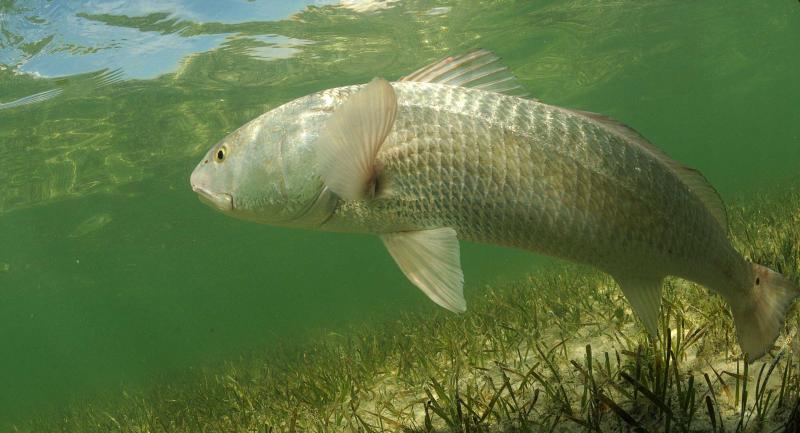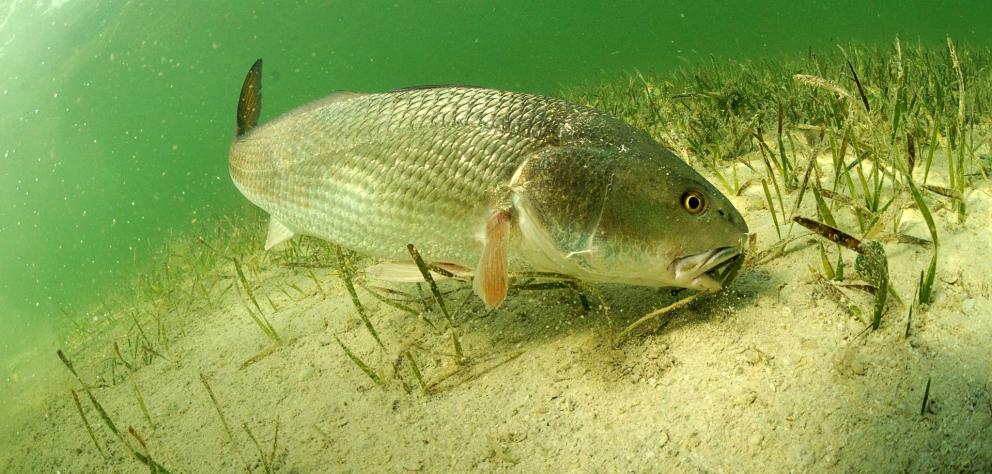Red Drum, also known as redfish, spottail, red bass and channel bass, are bronze or copper in color and have one or more black spots at the base of their tails. Many scientists believe that this black spot protects young drum from larger fish by acting as a decoy "eye." The larger fish are more likely to attack the head of the young, vulnerable red drum. The decoy eye fools predators into believing that the red fish's tail is its head. When a predator makes a grab for the fish's tail, the redfish has time to swim away.
Red drum are found both inshore and offshore throughout the Gulf of America. However, these fish spend most their lives inshore in the fertile waters of estuaries. Like most other saltwater game fish, the red drum is born in the estuary. After about four years of living in the estuary, the redfish moves to shallow, muddy areas and seagrass beds. The fish feed on animals it finds along the sea floor, such as clams, shrimp and aquatic worms. Redfish can grow to a size of 50 pounds, live for more than 20 years and are a prized catch for many fishermen.


